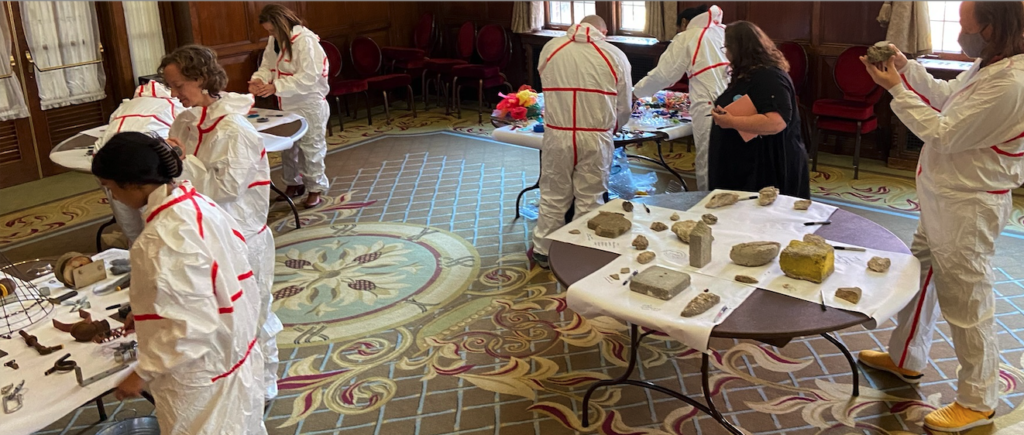Vibrant Things: Harnessing Material Spirits As Knowledge Guides
Perrin Teal Sullivan and Emily Norton, 2022-2023
As artists, educators, and long-time collaborators we have spent the past two decades exploring the knowledge-generating affordances of an arts-based research practice together. The core themes that have driven our work include artmaking as a way of embodying knowledge in order to better understand our agency within complex systems; artmaking as a means of bridging domains and contexts in order to connect through common experience across disciplines, locations, and orientations; artmaking as a practice of finding form in the void, generating new narratives and pathways into the unknown; and artmaking as a means of conversing with others, enhancing our collective capacity to integrate diverse perspectives into new forms of knowledge.
Often separated by thousands of miles, we have been exploring the contours of collaborative making in the hybrid space where our sensory experience is mediated through the filter of the digital interfaces that connect us. In generating the parameters for this project, we met regularly by zoom, and noticed how we acted as each others’ sensory proxies over a vast geographic expanse, transmitting our physical experience to each other via words, sounds, and images. This process developed perspectives that seemed to inhabit the distance between us but also, surprisingly, above and around us, encompassing a much greater scale than we had anticipated. We bridge this space through an ongoing conversation, building on each others’ material explorations, and passing back and forth the words and images that emerge.
The project began as a period of inquiry and conversation between us, weaving together the core themes of our previous work to explore how a deep engagement with materials through artmaking can reveal their agentic spirits, and guide discoveries about the larger systems in which they operate.

We focus on four materials that currently play an outsized role as forces of creation and destruction of our civilization: steel, cement, plastic, and ammonia. Essential to the fundamental operations of the modern world, these materials shelter us, feed us, heal us, and transport us. But their production is collectively responsible for a quarter of our CO2 outputs and represents a major obstacle in shifting our climate trajectory away from crisis. We wonder: what might close observations, haptic interactions, and sustained sensorial engagement reveal about the agency inherent in these powerful materials? How might understanding their spirits open up new possibilities for shifting our current resource dependencies?
The process has informed a series of workshops where participants explore our growing collections of these four materials through guided experimentation. Without prior knowledge of the thematic link, they play with, manipulate, and assemble materials from the collections, observing and building a relationship with their material spirits, and reflecting on the ways the material properties give form to their creative choices and interactions. We conclude by contextualizing these observations within the larger framework of the creative/destructive duality of our civilization’s reliance on these materials, with the hope that we move forward with a deeper understanding of their agency to guide us toward better futures.

Further Reading
This project has been informed by the following thinkers and these texts:
Bennett, Jane. Vibrant Matter: a Political Ecology of Things. United States, Duke University Press, 2010.
Ingold, Tim. Lines: A Brief History. United Kingdom, Taylor & Francis, 2016.
Ingold, Tim. Making: Anthropology, Archaeology, Art, and Architecture. United Kingdom, Taylor & Francis, 2013.
Paul, Annie Murphy. The Extended Mind: The Power of Thinking Outside the Brain. United States, Houghton Mifflin Harcourt, 2021.
Smil, Vaclav. How the World Really Works: The Science Behind How We Got Here and Where We’re Going. United States, Penguin Publishing Group, 2022.